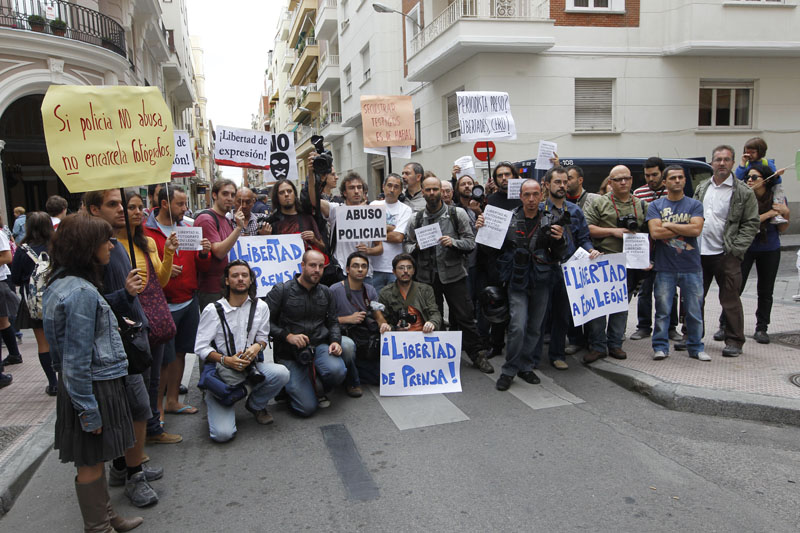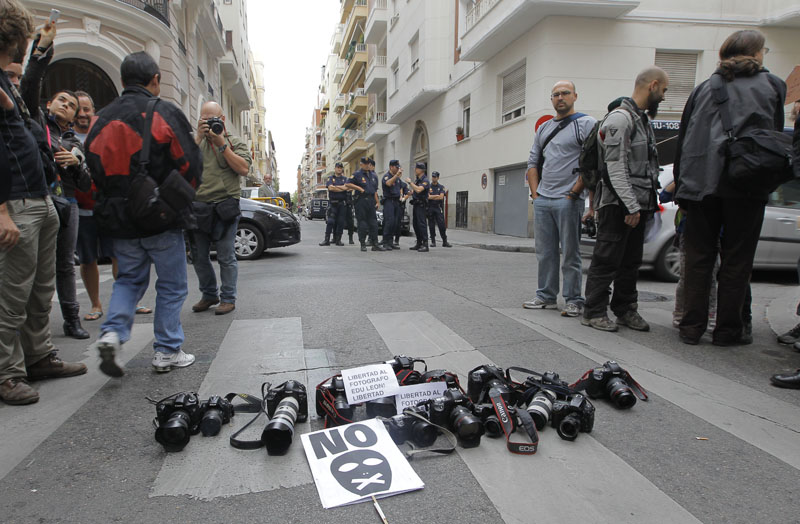
From Wikipedia, the free encyclopedia
|
| Semiotics |
|
| General concepts |
| |
| Methods |
| |
| Semioticians |
| |
| Related topics |
| |
| |
Biosemiotics (from the Greek bios meaning "life" and semeion meaning "sign") is a growing field that studies the production, action and interpretation of signs in the biological realm. Biosemiotics attempts to integrate the findings of scientific biology and semiotics, representing a paradigmatic shift in the occidental scientific view of life, demonstrating that semiosis (sign process, including meaning and interpretation) is its immanent and intrinsic feature. The term "biosemiotic" was first used by Friedrich S. Rothschild in 1962, but Thomas Sebeok and Thure von Uexküll have done much to popularize the term and field.[1] The field, which challenges normative views of biology, is generally divided between theoretical and applied biosemiotics, with the former dominating the latter.
Biosemiotics is that branch of one,which deals with the study of production,action and interpretation of signs in the biological field.
[edit] Definition
Biosemiotics is biology interpreted as a sign systems study, or, to elaborate, biosemiotics is a study of
[edit] Approach
To define biosemiotics as “biology interpreted as sign systems study” is to emphasize not only the close relation between biology as we know it (as a scientific field of inquiry) and semiotics (the study of signs), but primarily the profound change of perspective implied when life is considered not just from the perspectives of molecules and chemistry, but as signs conveyed and interpreted by other living signs in a variety of ways, including by means of molecules. In this sense, biosemiotics takes for granted and respects the complexity of living processes as revealed by the existing fields of biology – from molecular biology to brain science and behavioural studies – however, biosemiotics attempts to bring together separate findings of the various disciplines of biology (including evolutionary biology) into a new and more unified perspective on the central phenomena of the living world, including the generation of function and signification in living systems, from the ribosome to the ecosystem and from the beginnings of life to its ultimate meanings.
Furthermore, by providing new concepts, theories and case studies from biology, biosemiotics attempts to throw new light on some of the unsolved questions within the general study of sign processes (semiotics), such as the question about the origin of signification in the universe. Here, signification (and sign) is understood in a very general sense, that is, not simply the transfer of information from one place to another, but the generation of the very content and meaning of that information in human as well as non-human sign producers and sign receivers.
Sign processes are thus taken as real: They are governed by regularities (habits, or natural rules) that can be discovered and explained. They are intrinsic in living nature, but we can access them, not directly, but indirectly through other sign processes (qualitative distinction methods, for instance) -- even though the human representation and understanding of these processes (in the construction of explanations) builds up as a separate scientific sign system distinct from the organisms’ own sign processes.
One of the central characteristics of living systems is the highly organized character of their physical and chemical processes, partly based upon informational and molecular properties of what came to be known in the 1960s as the genome. Distinguished biologists, such as Ernst Mayr and Manfred Eigen have seen these informational aspects as one of the emergent features of life as a process that distinguish life from anything else in the physical world, except, perhaps, man-made computers. However, whereas the informational teleology of computer programmes are derived, by being designed by humans to achieve specific goals, the teleology and informational characteristics of organisms are intrinsic, by being evolved naturally, through adaptation processes.
Traditional biology (and philosophy of biology) has seen such processes as being purely physical and, being influenced by a reductionist and mechanistic tradition, has adopted a very restricted notion of the physical as having to do with only efficient causation. Biosemiotics uses concepts from semiotics (in the sense of C.S. Peirce as the broad logical and scientific study of dynamic sign action in humans as well as elsewhere in nature) to answer questions about the biological emergence of meaning, intentionality and a psychic world; questions that are hard to answer within a purely mechanist and physicalist framework.
Biosemiotics sees the evolution of life and the evolution of semiotic systems as two aspects of the same process. The scientific approach to the origin and evolution of life has, in part due to the success of molecular biology, given us highly valuable accounts of the outer aspects of the whole process, but has overlooked the inner qualitative aspects of sign action, leading to a reduced picture of causality. Complex self-organized living systems are also governed by formal and final causality —- formal in the sense of the downward causation from a whole structure (such as the organism) to its individual molecules, constraining their action but also endowing them with functional meanings in relation to the whole metabolism; and final in the sense of the tendency to take habits and to generate future interpretants of the present sign actions. Here, biosemiotics draws also upon the insights of fields like systems theory, theoretical biology and the study of complex self-organized systems.
Particular scientific fields like molecular biology, cognitive ethology, cognitive science, robotics, and neurobiology deal with information processes at various levels and thus spontaneously contribute to knowledge about biosemiosis (sign action in living systems). However, biosemiotics proper is not yet a specific disciplinary research programme, but a general perspective on the need for investigating the role that "sign" use plays in life processes, and attempts to integrate such findings, and to build a semiotic foundation for biology. It may help to resolve some forms of Cartesian dualism that is still haunting philosophy of mind. By describing the continuity between body and mind, biosemiotics may also help us to understand how human "mindedness" may naturalistically emerge from more primitive processes of embodied animal "knowing."
[edit] Main branches
According to the basic types of semiosis under study, biosemiotics can be divided into
- vegetative semiotics, or phytosemiotics;[2][3] vegetative semiosis occurs in all organisms at their cellular and tissue level;
- animal semiotics, or zoosemiotics; animal semiosis occurs in the organisms with neuromuscular system.
[edit] History
Apart from Charles Sanders Peirce (1839–1914) and Charles W. Morris (1903–1979), early pioneers of biosemiotics were Jakob von Uexküll (1864–1944), Heini Hediger (1908–1992), Giorgio Prodi (1928–1987, Marcel Florkin (1900–1979) and Friedrich S. Rothschild (1899–1995). ; the founding fathers of the contemporary interdiscipline were Thomas Sebeok (1920–2001)and Thure von Uexküll (1908–2004).
The contemporary period (as initiated by Copenhagen-Tartu school) include biologists Jesper Hoffmeyer, Kalevi Kull, Claus Emmeche, Terrence Deacon, Luis Bruni, Alexei Sharov, Søren Brier, Marcello Barbieri, Anton Markos, Howard Pattee, Yair Neuman, Timo Maran, semioticians Martin Krampen, Frederik Stjernfelt, Floyd Merrell, John Deely, Myrdene Anderson, Lucia Santaella, Marcel Danesi, Winfried Nöth, philosophers John Collier, Donald Favareau, Tommi Vehkavaara, Guenther Witzany, et al.
In 2001, an annual international conference for biosemiotic research (Gatherings in Biosemiotics) was inaugurated, and has taken place every year since.
In 2004, a group of biosemioticians - Marcello Barbieri, Claus Emmeche, Jesper Hoffmeyer, Kalevi Kull, and Anton Markos - decided to establish an international journal of biosemiotics. Under their editorship, the Journal of Biosemiotics was launched by Nova Science Publishers in 2005 (two issues published), and with the same five editors the Biosemiotics was launched by Springer in 2008.
The International Society for Biosemiotic Studies was established in 2005.[4] A collective programmatic paper on the basic theses of biosemiotics appeared in 2009.[5]
[edit] Bibliography
- Favareau, D. (Ed.) (2010). Essential Readings in Biosemiotics: Anthology and Commentary. Berlin: Springer.
- Favareau, D. (2006). The evolutionary history of biosemiotics. In "Introduction to Biosemiotics: The New Biological Synthesis." Marcello Barbieri (Ed.) Berlin: Springer. pp 1–67.
- Emmeche, Claus; Kalevi Kull and Frederik Stjernfelt. (2002): Reading Hoffmeyer, Rethinking Biology. (Tartu Semiotics Library 3). Tartu: Tartu University Press.
- Hoffmeyer, Jesper. (1996): Signs of Meaning in the Universe. Bloomington: Indiana University Press. (special issue of Semiotica vol. 120 (no.3-4), 1998, includes 13 reviews of the book and a rejoinder by the author).
- Hoffmeyer, Jesper (2008). Biosemiotics: An Examination into the Signs of Life and the Life of Signs. Scranton: University of Scranton Press.
- Hoffmeyer Jesper; Kull, Kalevi (2003): Baldwin and Biosemiotics: What Intelligence Is For. In: Bruce H. Weber and David J. Depew (eds.), Evolution and Learning - The Baldwin Effect Reconsidered'. Cambridge: The MIT Press.
- Kull, Kalevi, eds. (2001). Jakob von Uexküll: A Paradigm for Biology and Semiotics. Berlin & New York: Mouton de Gruyter. [ = Semiotica vol. 134 (no.1-4)].
- Sebeok, Thomas A., and Umiker-Sebeok, Jean, (eds.) (1992): Biosemiotics. The Semiotic Web 1991. Berlin and New York: Mouton de Gruyter.
- Sebeok, Thomas A.; Hoffmeyer, Jesper; and Emmeche, Claus, eds. (1999). Biosemiotica. Berlin & New York: Mouton de Gruyter. [ = Semiotica vol. 127 (no.1-4)].
- Witzany, G. (2006). The Logos of the Bios 1. Contributions to the foundation of a three leveled biosemiotics. Helsinki: Umweb.
- Witzany, G. (ed.) (2007). Biosemiotics in Transdisciplinary Contexts: Proceedings of the Gathering in Biosemiotics 6, Salzburg 2006. Helsinki: Umweb.[1]
- Rothschild, Friedrich S. (2000). Creation and Evolution: A Biosemiotic Approach. Edison, New Jersey: Transaction Publishers.
- Hoffmeyer, Jesper (Editor)(2008). A Legacy for Living Systems: Gregory Bateson as a Precursor to Biosemiotics. Berlin: Springer.
- Barbieri, Marcello (Editor) (2008). "The Codes of Life: The Rules of Marcoevolution." Berlin: Springer.
[edit] References
- ^ Kull, Kalevi 1999. Biosemiotics in the twentieth century: A view from biology. Semiotica 127(1/4): 385–414.
- ^ Kull, Kalevi 2000. An introduction to phytosemiotics: Semiotic botany and vegetative sign systems. Sign Systems Studies 28: 326–350.
- ^ Witzany, Günther 2008. The biosemiotics of plant communication. American Journal for Semiotic Studies 24: 39–56.
- ^ Favareau, Donald 2005. Founding a world biosemiotics institution: The International Society for Biosemiotic Studies. Sign Systems Studies 33(2): 481–485.
- ^ Kull, Kalevi; Deacon, Terrence; Emmeche, Claus; Hoffmeyer, Jesper; Stjernfelt, Frederik 2009. Theses on biosemiotics: Prolegomena to a theoretical biology. Biological Theory 4(2): 167–173.
[edit] External links





















